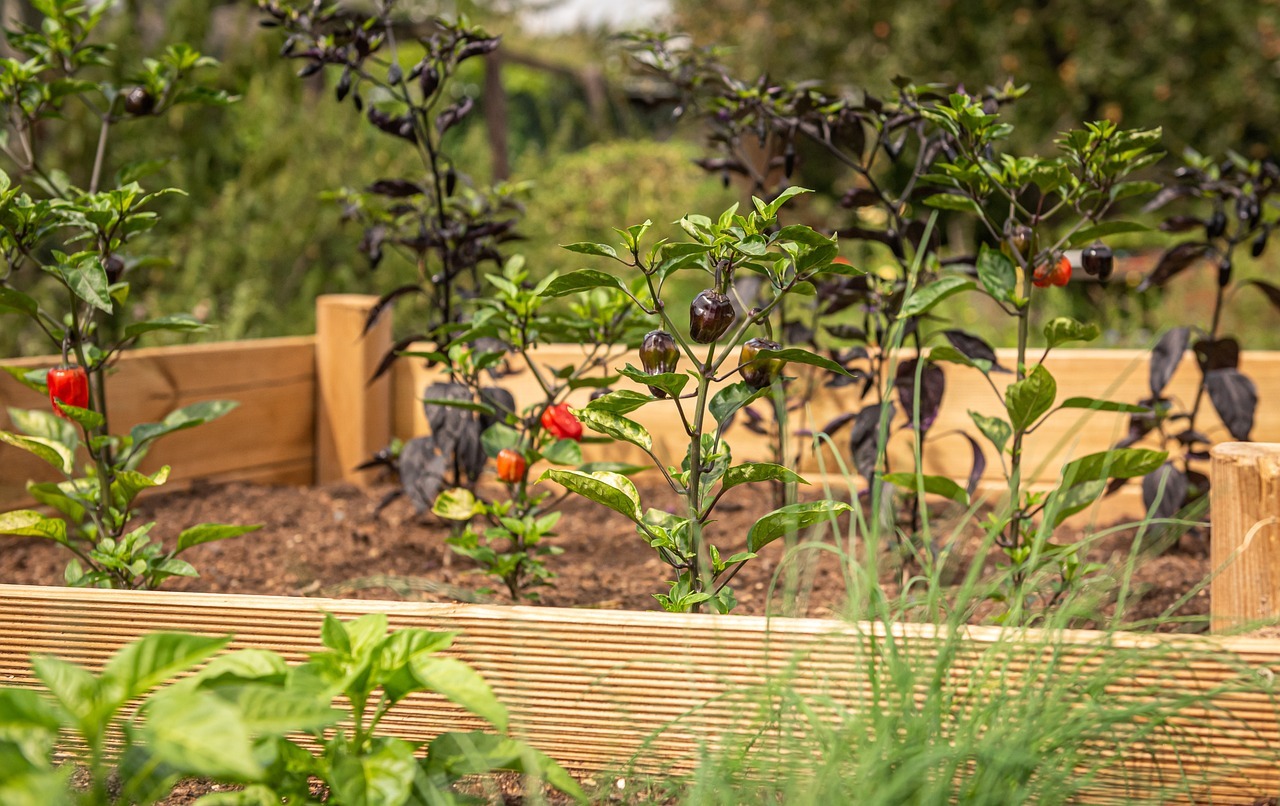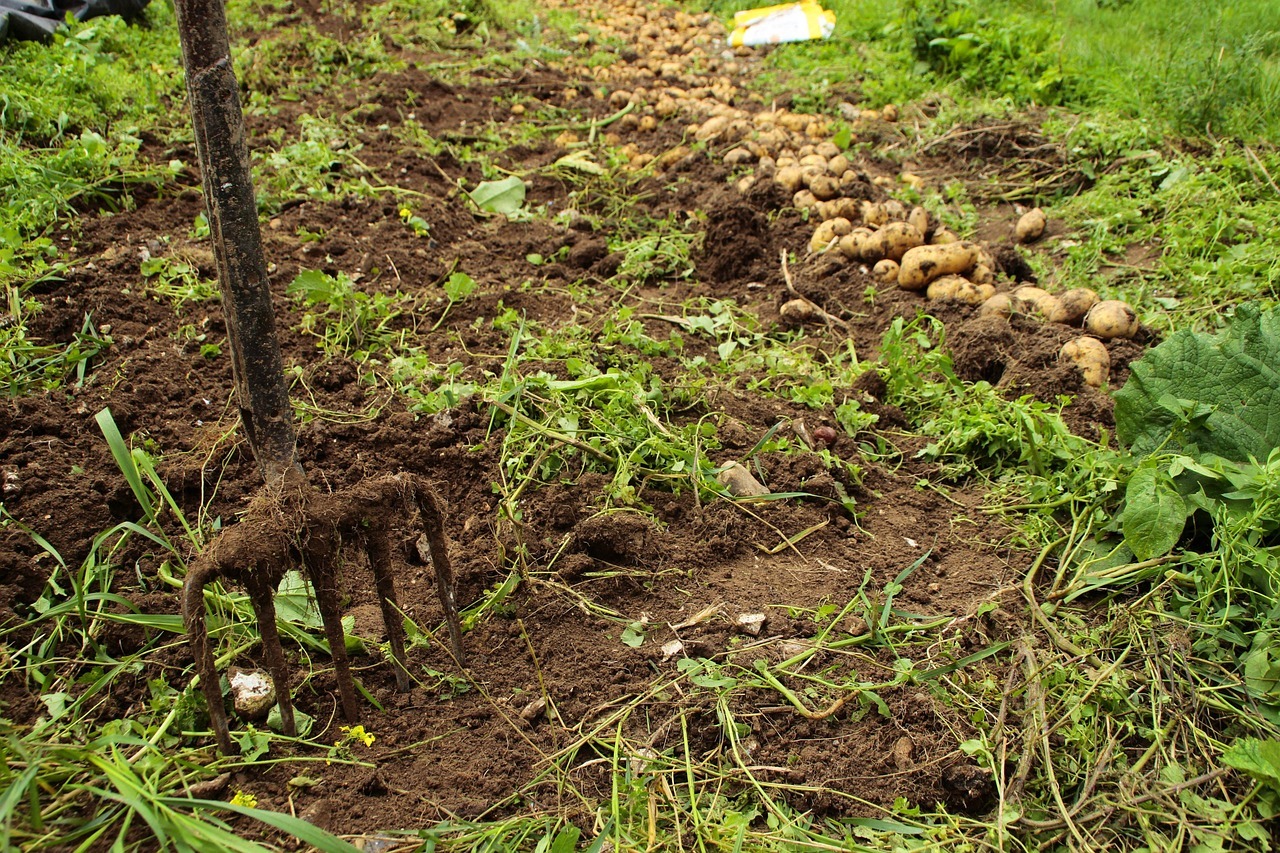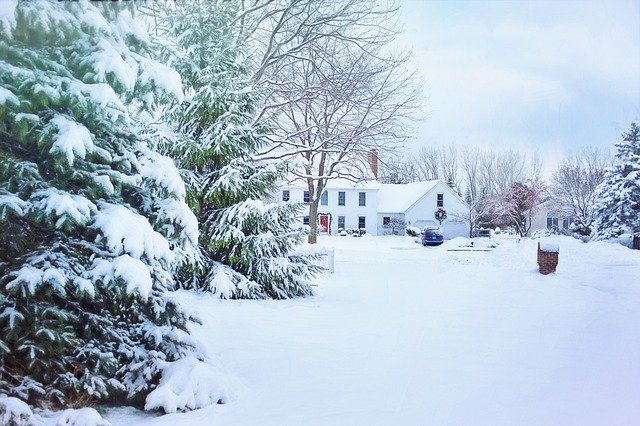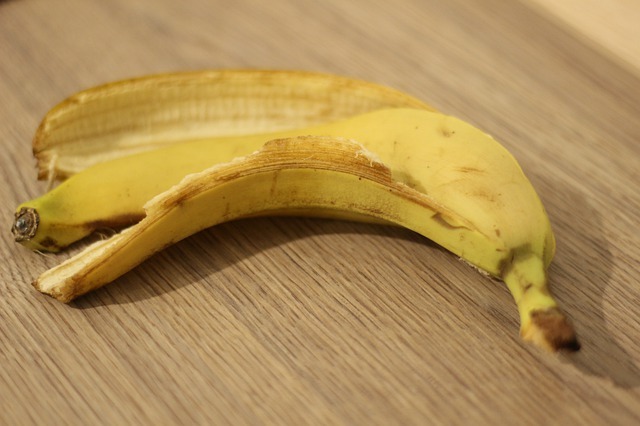Planting Edible Flowers and Foraging: Enhance Your Homestead's Food Supply
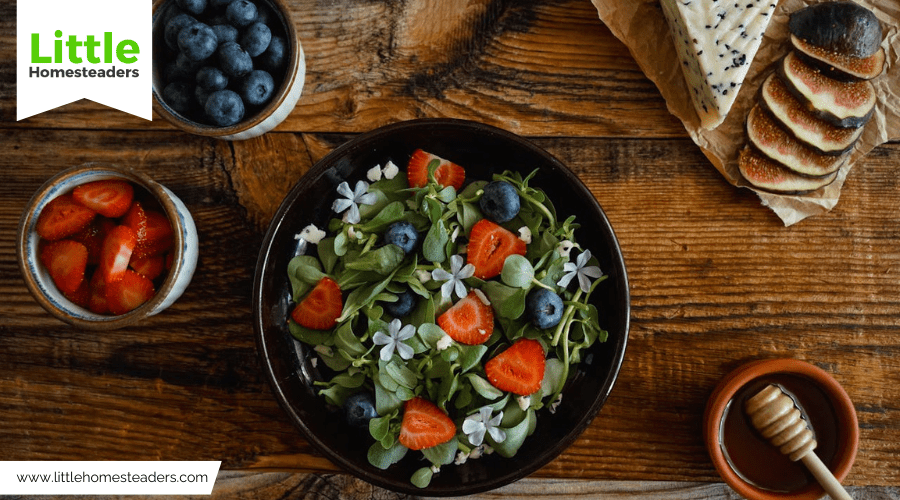
When it comes to making the most of your homestead, few activities are as rewarding as planting edible flowers and foraging for wild foods. These practices don’t just add beauty and flavor to your life—they also help create a sustainable and resourceful lifestyle. Whether you’re growing vibrant flowers to liven up your meals or responsibly harvesting nature’s wild bounty, you’ll find that these activities are as fulfilling as they are practical. With proper planning, you can transform your outdoor spaces into a treasure trove of culinary delights and connect with the abundance around you.
Benefits of Edible Flowers
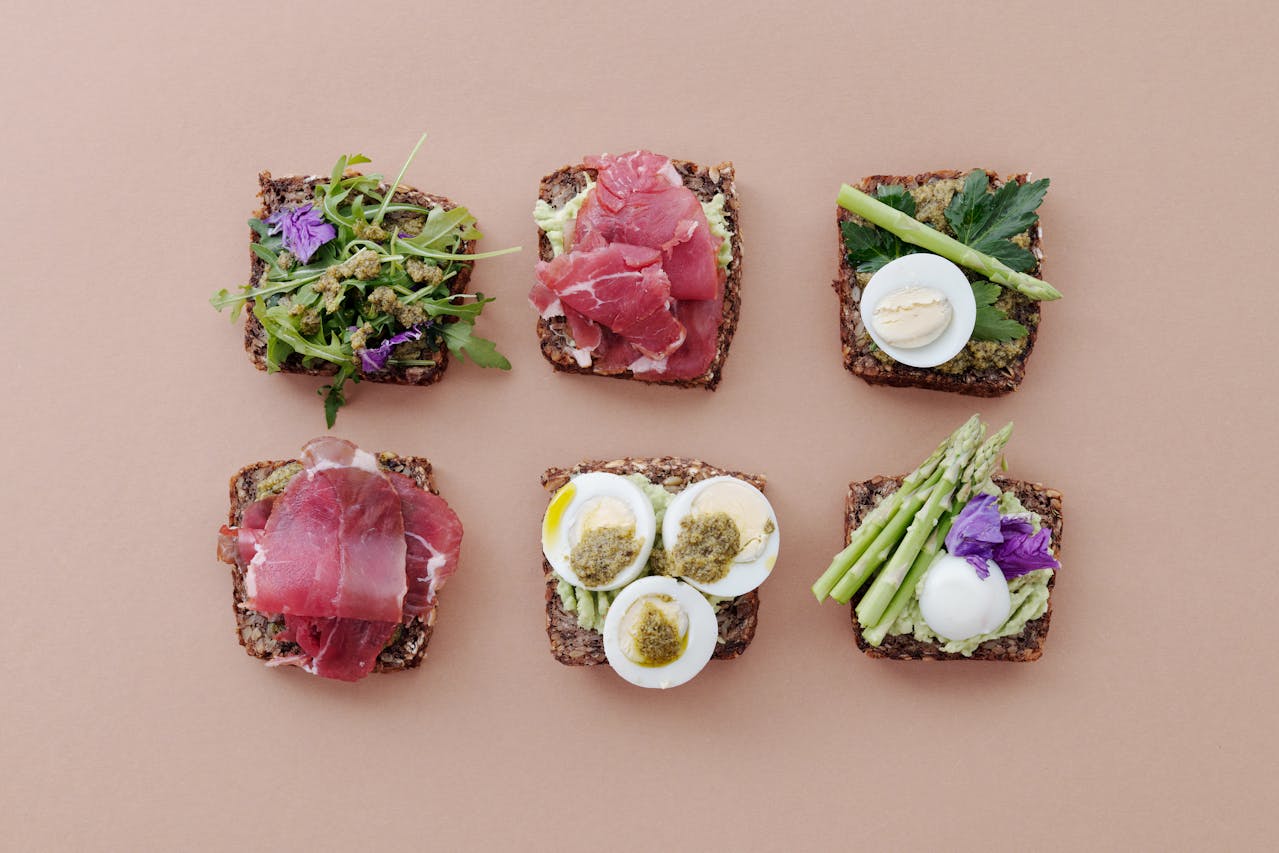
Edible flowers aren’t just for show—they’re a game-changer for your garden, your kitchen, and even your health.
1. Aesthetic Appeal
Imagine a garden filled with blooms in every color of the rainbow, with butterflies and bees buzzing about. Edible flowers like pansies, calendula, and nasturtiums don’t just bring beauty to your outdoor spaces; they add a touch of magic to your meals. A simple salad sprinkled with vibrant petals can make an ordinary meal feel like a gourmet experience. These flowers are nature’s way of turning your dishes into edible art. Whether you’re hosting a dinner party or sharing your creations online, the visual appeal of edible flowers makes your food stand out.
2. Culinary Versatility
Edible flowers are one of the most versatile ingredients you can grow. Lavender adds a calming floral note to baked goods, teas, and even roasted meats. Nasturtiums offer a peppery kick that’s perfect for salads, wraps, and sandwiches. Roses, with their delicate sweetness, are ideal for syrups, desserts, or even cocktails. Each flower brings its unique flavor profile to the table, giving you endless possibilities to explore in your cooking. With edible flowers, your meals will never be boring again.
3. Nutritional Value
Edible flowers are small but mighty when it comes to nutrition. Packed with vitamins, minerals, and antioxidants, they add a nutritional boost to your diet. For example, calendula is high in beta-carotene, which supports eye health and immune function. Dandelions are rich in vitamin C, iron, and calcium, making them a powerhouse of nutrition. Including edible flowers in your meals is an easy and natural way to enhance your overall well-being.
Common Edible Flowers for Homesteads
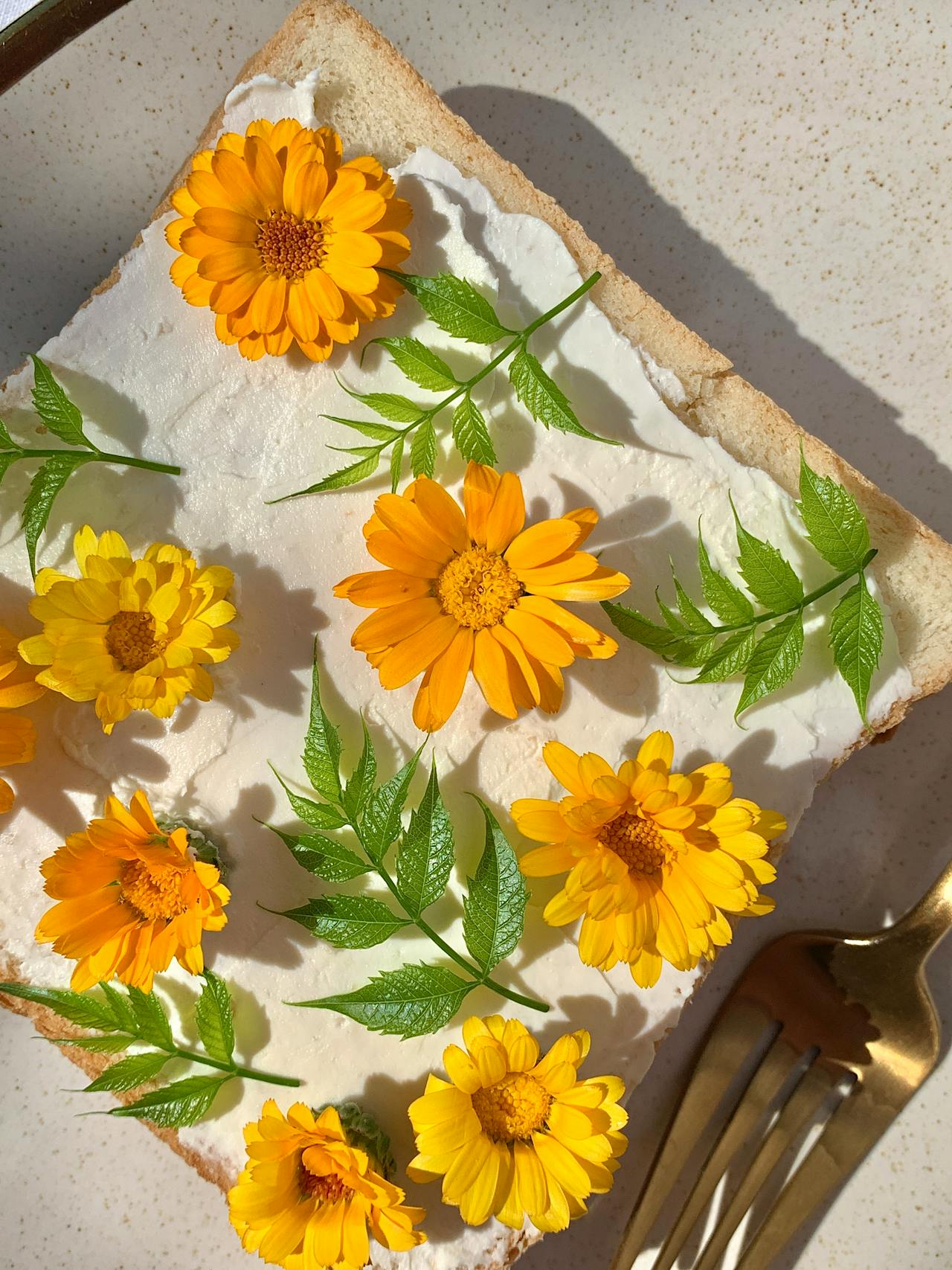
Expanding your edible garden with flowers is a great way to bring beauty and utility together. Here are some top choices for your homestead:
1. Nasturtiums
Nasturtiums are a homesteader’s dream. They’re easy to grow, thrive in a variety of climates, and produce edible flowers, leaves, and seeds. Their peppery taste is similar to arugula, making them a great addition to salads, pestos, or even sandwiches. Plus, nasturtiums attract pollinators like bees and butterflies, which benefit your entire garden.
2. Calendula (Pot Marigold)
Calendula’s sunny yellow and orange blooms brighten up any garden. With a flavor that’s slightly citrusy and peppery, calendula petals can be added to soups, stews, and rice dishes. They’re often called “poor man’s saffron” because they can be used as a natural coloring agent in cooking. Calendula is also prized for its medicinal properties, especially in soothing skin irritations.
3. Lavender
Lavender is not only beautiful but also incredibly versatile. Its sweet, floral aroma makes it perfect for desserts like lavender shortbread cookies or lavender-infused cakes. You can also use it to flavor teas, syrups, and cocktails. Lavender even has a calming effect, making it a wonderful addition to bedtime teas or aromatherapy blends.
4. Squash Blossoms
Squash blossoms are a gourmet treat that’s easy to grow. These delicate flowers can be stuffed with cheeses, battered and fried, or added to soups and stir-fries. Their mild, slightly sweet flavor pairs well with savory dishes, making them a favorite in many cuisines.
5. Bee Balm
Bee balm, with its minty and oregano-like flavor, is a fantastic addition to herbal teas, salads, and baked goods. Its bright red or pink blooms also make it a showstopper in your garden. Bee balm attracts hummingbirds and bees, making it a great choice for pollinator-friendly gardening.
6. Borage
The star-shaped blue flowers of borage are as delicious as they are beautiful. With a fresh, cucumber-like flavor, borage is perfect for garnishing salads, soups, or drinks. Freeze the flowers in ice cubes to add a decorative touch to summer beverages.
7. Roses
Roses, particularly fragrant varieties like Rugosa, are a classic choice for edible flowers. The petals can be used to make rose water, syrups, or jellies, and they add a sweet, floral touch to desserts and beverages. A handful of rose petals can turn a simple fruit salad into an elegant dish.
8. Pansies and Violets
These dainty flowers are a favorite for garnishes. With their mild, slightly sweet flavor, pansies and violets are perfect for decorating cakes, salads, and cocktails. Candied violets are especially delightful as a decorative treat.
9. Chive Blossoms
Chive blossoms have a mild onion flavor that makes them ideal for savory dishes. Use them to flavor compound butter, infuse vinegar, or garnish soups and roasted vegetables.
10. Dandelions
Often dismissed as weeds, dandelions are a nutritional powerhouse. Their flowers can be used for teas and wines, while the young leaves are great in salads. Even the roots can be roasted to make a coffee substitute.
Growing Edible Flowers
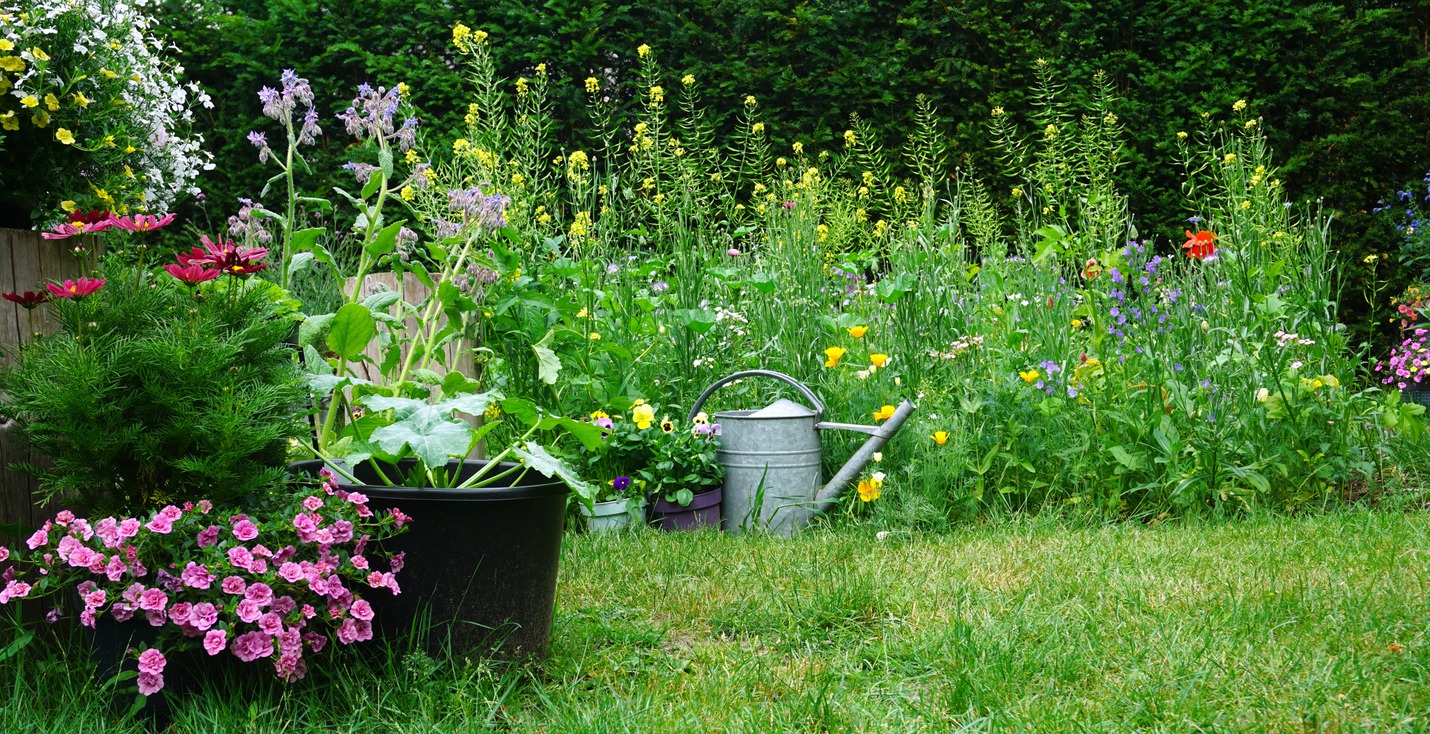
Growing edible flowers is a rewarding endeavor that can be tailored to your homestead’s needs.
1. Plan Your Garden
The first step to success is thoughtful planning. Decide which flowers suit your climate and your culinary preferences. Aim for a mix of heights, colors, and textures to create a garden that’s both functional and beautiful.
2. Choose Dual-Purpose Plants
Herbs like basil, dill, and mint produce edible flowers in addition to their leaves. By planting these dual-purpose herbs, you can maximize your garden’s output without taking up extra space.
3. Care for Your Plants
Edible flowers need to be grown in healthy, chemical-free soil. Avoid pesticides and opt for natural fertilizers like compost to ensure that your flowers are safe for consumption. Regular watering, weeding, and pruning will keep your plants thriving.
4. Harvest Regularly
Pick flowers in the morning, after the dew has dried when they’re freshest. Harvesting regularly encourages plants to produce more blooms, ensuring a steady supply throughout the growing season.
Foraging Safety Precautions
Foraging for wild foods is an exciting way to supplement your diet, but safety is key.
1. Use Reliable Resources
Invest in a regional field guide or download a plant identification app to help you distinguish between edible plants and their toxic lookalikes. Proper identification is non-negotiable.
2. Avoid Contaminated Areas
Be cautious about where you forage. Avoid gathering plants from roadsides, industrial sites, or areas treated with pesticides. These plants may be contaminated with harmful substances.
3. Start Slowly
When trying a new wild plant, start with a small portion to test for any adverse reactions. Even edible plants can cause allergies or sensitivities in some people.
4. Harvest Responsibly
Take only what you need and leave enough for the plants to regenerate and for wildlife to thrive. Ethical foraging ensures that natural resources remain abundant for future generations.
Seasonal Wild Edibles Guide
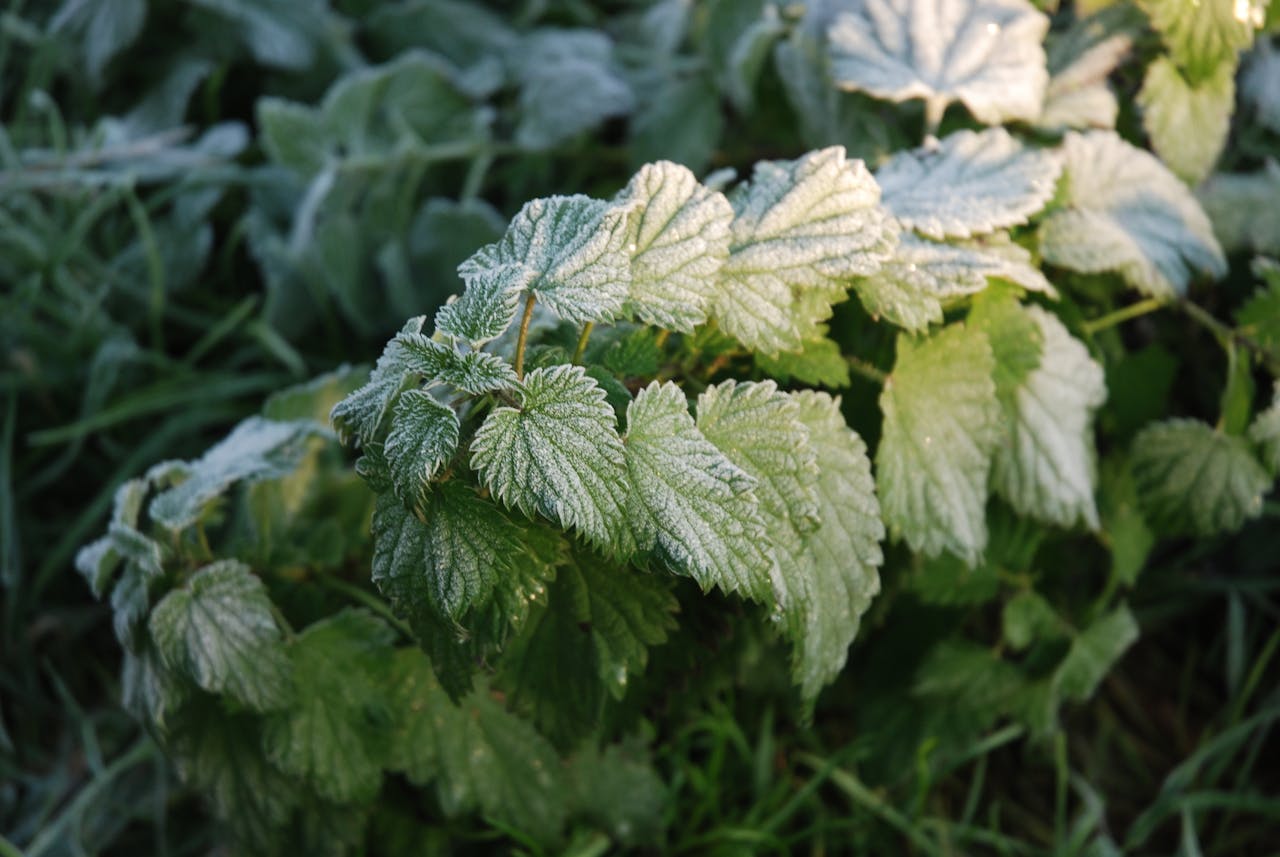
Foraging offers a year-round opportunity to enjoy nature’s seasonal bounty. Knowing what’s available during each season can help you diversify your food supply and make the most of your environment.
Spring
As nature wakes up from its winter slumber, spring brings a fresh crop of nutrient-rich wild edibles perfect for revitalizing your diet.
- Nettles: These vibrant green plants are among the first to appear in spring. Rich in iron, calcium, and vitamins, nettles are excellent for soups, stews, and teas. Be sure to wear gloves when harvesting to avoid their sting, which disappears upon cooking or drying.
- Chickweed: This tender, mild-flavored green is perfect for fresh salads or as a garnish. It’s also packed with vitamin C and can be used in herbal remedies.
- Dandelions: Spring is prime time for dandelions, from their cheerful yellow flowers to their young, tender leaves. The flowers can be steeped to make wine or teas, while the leaves add a slightly bitter yet nutritious crunch to salads.
Summer
Summer is the season of abundance, with fruits, flowers, and herbs reaching their peak.
- Wild Raspberries: These juicy berries are a favorite for snacking, baking, or making preserves. They grow in brambles along forest edges and clearings. Harvest them responsibly by leaving some for wildlife.
- Clover: Red and white clover blossoms are not only pretty but also useful. Infuse them into teas for a mild, earthy flavor, or use them as a garnish for salads and desserts. Clover is also valued for its medicinal properties, particularly in supporting respiratory and skin health.
Fall
As summer fades, fall brings a rich harvest of fruits and seeds, perfect for preserving.
- Wild Grapes: Found climbing trees and fences, wild grapes are smaller and more tart than cultivated varieties. They’re perfect for jams, jellies, and juices. Their leaves can also be used for wraps or pickling.
- Apples: Fall is apple season, and windfall apples—those that have naturally fallen from the tree—are ideal for sauces, pies, and cider. They can often be found in wild or neglected orchards.
- Acorns: Often overlooked, acorns can be foraged, leached of their bitterness, and ground into flour for baking.
Winter
Though the colder months may seem barren, some wild edibles remain available for the determined forager.
- Plantain: This hardy herb can be harvested year-round in mild climates. Its leaves are medicinal and can be used for teas or poultices.
- Yarrow: Yarrow leaves and flowers are known for their medicinal properties, including their ability to support the immune system and soothe wounds. Harvest them before heavy frost and dry them for winter use.
Seasonal foraging not only adds variety to your diet but also helps you stay connected to nature’s rhythms. By learning what’s available in each season, you can enjoy a constantly changing palette of flavors and nutrients.
Harvesting and Preserving Techniques
Once you’ve grown or foraged edible flowers and wild plants, proper harvesting and preservation ensure their flavors and nutrients are preserved for longer use.
Harvesting Tips
- Time It Right: Harvest in the early morning, after the dew has dried but before the sun’s heat wilts the flowers. This is when they’re at their freshest and most flavorful.
- Handle with Care: Use sharp scissors or garden snips to cut flowers cleanly. Avoid bruising the petals to preserve their delicate textures and colors.
- Select the Best: Choose flowers that are fully bloomed but not overripe. Flowers past their prime may lose their flavor and nutritional value.
Preservation Methods
1. Drying
Drying is one of the simplest ways to preserve flowers for long-term use. Tie small bunches of flowers together and hang them upside down in a cool, dark place with good air circulation. Once dried, store them in airtight containers to prevent moisture absorption.
2. Freezing
Freezing flowers in ice cube trays is a practical and decorative method of preservation. Fill the trays with water, place one flower per cube, and freeze. These flower-filled ice cubes are perfect for adding a touch of elegance to drinks.
3. Crystallizing
For a beautiful and long-lasting garnish, coat flowers in a mixture of egg white and sugar, then let them dry completely. Crystallized flowers are ideal for decorating cakes, cookies, and other desserts.
4. Infusing
Infusing flowers into oils, vinegar, or syrups captures their flavor for culinary use. For example, lavender-infused honey or rose-infused vinegar can add a sophisticated twist to your recipes.
By mastering these preservation techniques, you can enjoy the beauty and benefits of edible flowers and wild foods throughout the year.
Culinary Uses for Edible Flowers
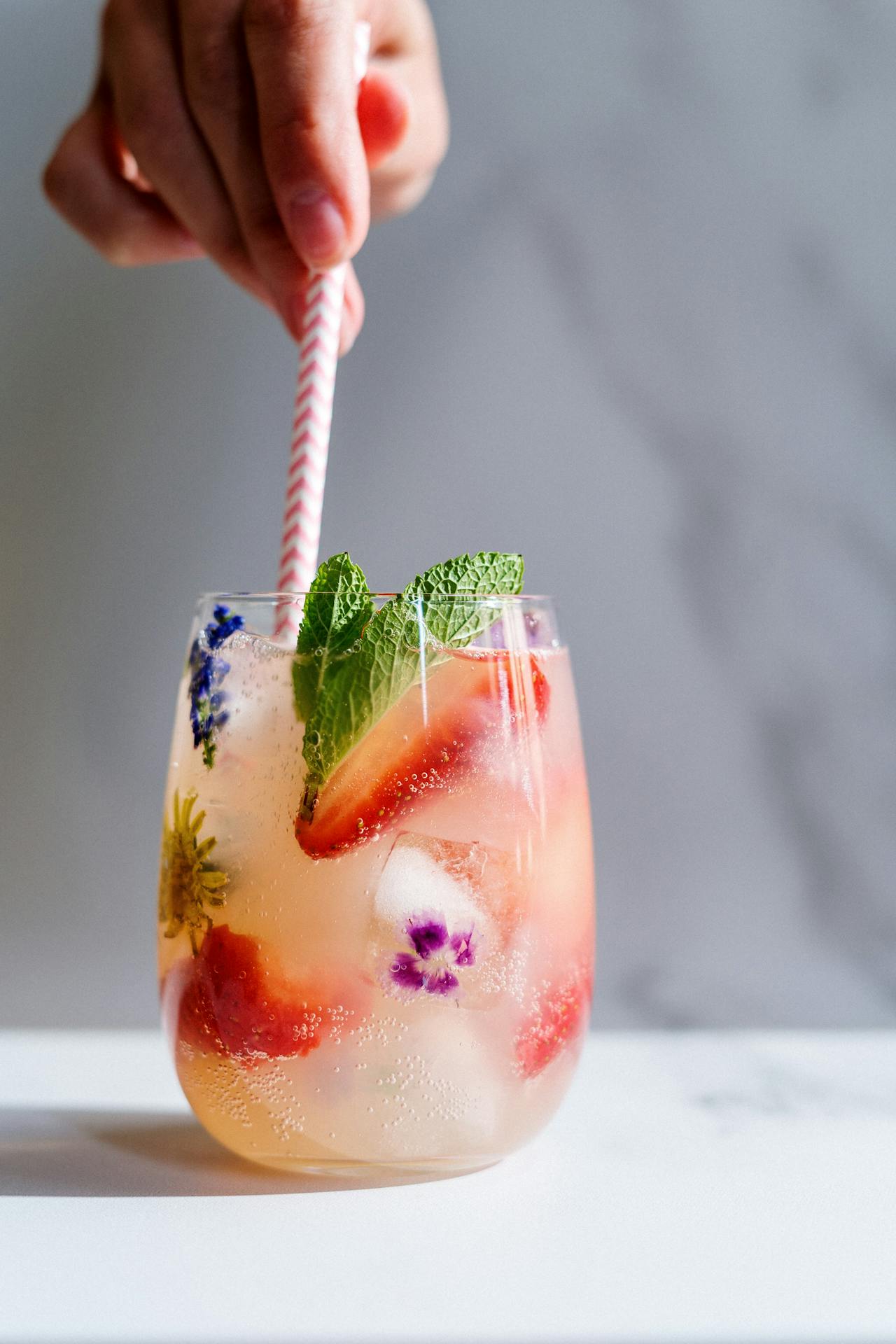
Edible flowers open up a world of culinary possibilities, turning simple dishes into gourmet creations. Whether you’re preparing savory meals, desserts, or beverages, these blooms bring unique flavors, textures, and visual appeal to the table.
Salads and Soups
Add a handful of nasturtium petals or calendula to a fresh green salad for a burst of color and a peppery or citrusy kick. You can also garnish soups with borage flowers or chive blossoms for a subtle flavor enhancement and an Instagram-worthy presentation.
Baked Goods
Lavender is a classic choice for baked goods, lending its calming floral aroma to cookies, cakes, and scones. Try incorporating rose petals into a sponge cake or candied violets into cupcakes for an elegant touch.
Infused Beverages
Infuse flowers like hibiscus, rose, or lavender into teas or syrups for cocktails. These infusions add a sophisticated flavor to your drinks and are perfect for special occasions. Freezing edible flowers into ice cubes also makes for a stunning addition to iced teas or cocktails.
Seasoning and Garnishes
Use calendula petals as a saffron substitute in rice dishes, soups, or stews. The slightly spicy and citrusy flavor of calendula enhances savory recipes while giving them a golden hue. Nasturtium leaves, which are also edible, can be used as a base for pesto, while the flowers make an excellent garnish.
Creative Desserts
Crystallized flowers like violets and pansies are a delightful addition to desserts. Use them to top cakes, cookies, or puddings for a touch of sweetness and beauty. You can also experiment with making floral jellies or syrups, such as rose or elderflower jelly, for unique spreads and toppings.
By experimenting with edible flowers in your cooking, you’ll discover new ways to elevate your meals and impress your guests. These delicate ingredients are as versatile as they are beautiful, making them a must-have for any adventurous cook.
Conclusion
Planting edible flowers and foraging for wild foods offer an incredible opportunity to deepen your connection with nature while enriching your homestead’s food supply. From growing vibrant nasturtiums to foraging wild ramps in the spring, these practices bring beauty, flavor, and sustainability into your life. Whether you’re an experienced gardener or just starting out, the possibilities are endless—and delicious. So, grab your gardening gloves and your foraging basket, and dive into the wonderful world of edible flowers and wild foods.

